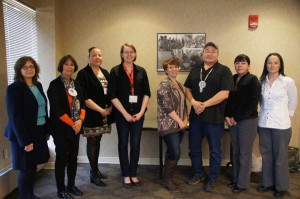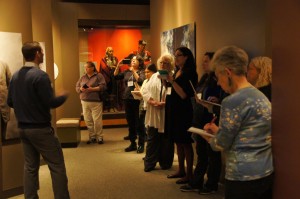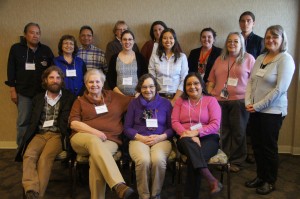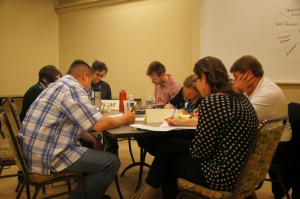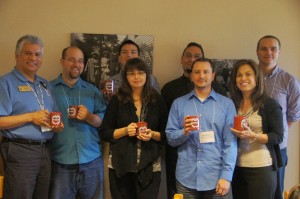This is the third of seven posts that recount last month’s Convening Great Lakes Culture Keepers (CGLCK) Institute at the Ziibiwing Center of Anishinabe Culture and Lifeways in Mt. Pleasant, Michigan, April 14-17, 2014. This four-day gathering of tribal librarians, archivists, and museum curators from Wisconsin, Minnesota, and Michigan, as well as staff and graduate students from the University of Wisconsin-Madison School of Library and Information Studies, was graciously funded by the Institute of Museum of Library Services. You can read more about the overview of the project here.
The second day of the Institute, on Tuesday, was spent in full-day classes, including:
- Our Oral History Story = Your Oral History Story
- Intellectual Property and the Native Cultural Center: Tales of use, misuse and when we just need to walk away
- Grant Writing for Cultural Institutions: The Basics
- Creating Motivating Exhibits
- Collaborative Curation and Sustainable Digital Heritage Strategies
I attended “Collaborative Curation and Sustainable Digital Heritage Strategies”, which was facilitated by Kimberly Christen Withey and Alex Merrill from Washington State University.
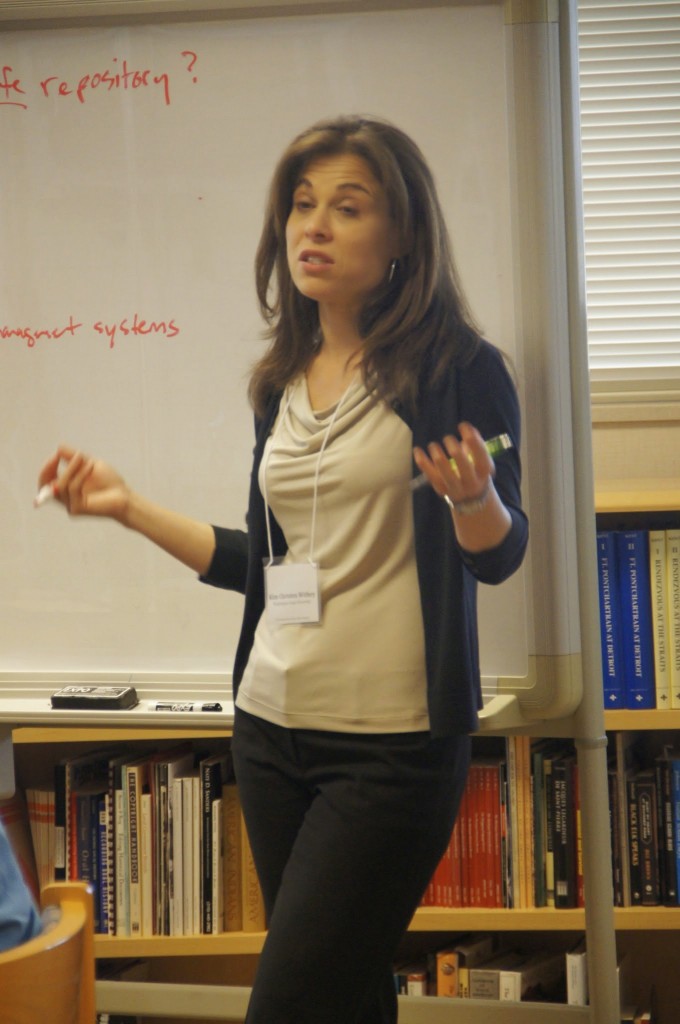
Kim began the session by talking about the collaborative process and then took us through an explanation and demo of Mukurtu, a software program built with indigenous communities to manage and share their digital cultural heritage. We’ve talked about Mukurtu on the blog before (in 2012 and early this year) but what makes Mukurtu different from other digital collections platforms is that tribal protocols are built into the software. This means that sensitive, religious, or other cultural information is protected and can be viewed only by the people with the correct responsibilities and roles in society.
That’s why Mukurtu is described as being “built with indigenous communities” because each instance of the software is different for each community using it (you can check out two implementations at the Plateau Peoples’ Web Portal and the Museum of New Zealand Te Papa Tongarewa Online Collections). And Kim told us that defining and deciding on how the protocols should be implemented is usually the longest part of the collaborative process.
After the demo, we discussed why communities should digitize materials and utilize digital collections platforms like Mukurtu. We brainstormed a bunch of ideas, but here are just a few of them. Digitizing materials allows us to organize, preserve, and access our cultural knowledge. It provides us with a platform to gather even more information about the materials. And It gives us a way to expand the use of the materials, even across great distances.
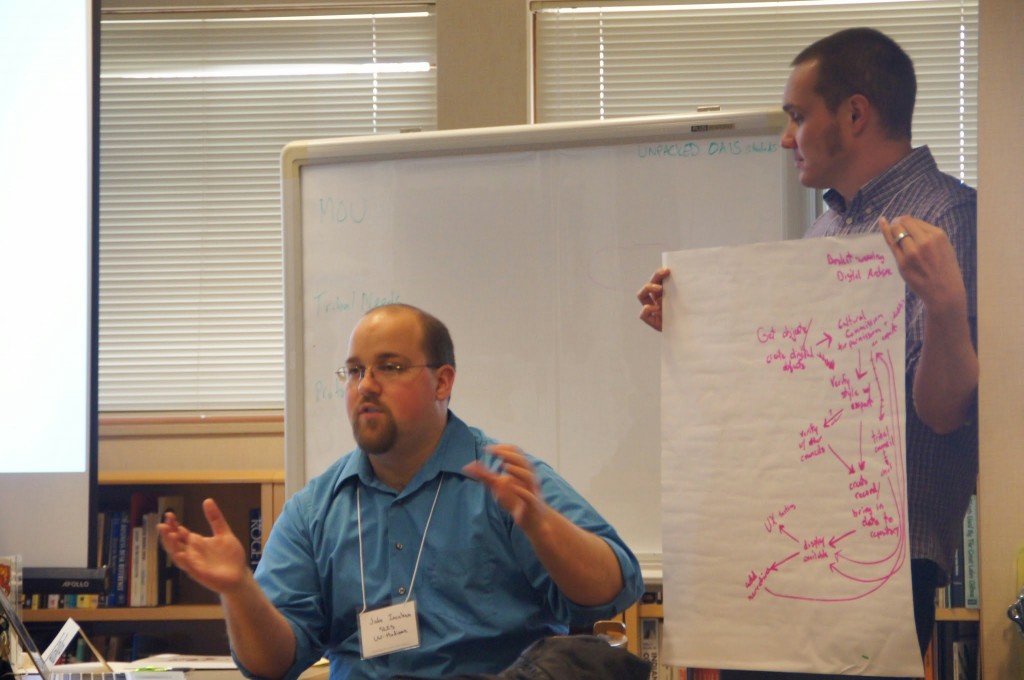
We finished the session by breaking up into pairs and developing digital object life cycles on giant post-it notes and beginning the planning processes on our own collaborative curation projects. All in all, it was a really engaging session that focused on creating effective collaborations and all the processes that are involved in that.
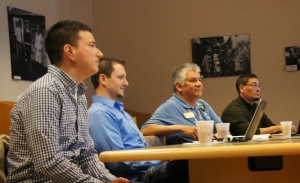
One of the major takeaways is best summed up in a quote from Willie Johnson, one of the curators at Ziibiwing, during the session. He said, “If you rely on the community to assist you, you will always be successful.” Collaborative curation is about working with communities and not for communities. We can’t force a community to think that something is important, but we instead have to let them decide for themselves and then provide our knowledge as information professionals to help them protect, preserve, and access it.
Stay tuned for our next post, by Lotus Norton-Wisla, about our Tuesday night event!
-Jake Ineichen

